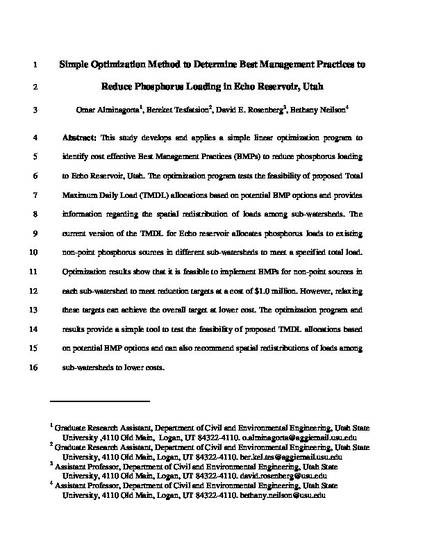
This study develops and applies a simple linear optimization program to identify cost effective Best Management Practices (BMPs) to reduce phosphorus loading to Echo Reservoir, Utah. The optimization program tests the feasibility of proposed Total Maximum Daily Load (TMDL) allocations based on potential BMP options and provides information regarding the spatial redistribution of loads among sub-watersheds. The current version of the TMDL for Echo reservoir allocates phosphorus loads to existing non-point phosphorus sources in different sub-watersheds to meet a specified total load. Optimization results show that it is feasible to implement BMPs for non-point sources in each sub-watershed to meet reduction targets at a cost of $1.0 million. However, relaxing these targets can achieve the overall target at lower cost. The optimization program and results provide a simple tool to test the feasibility of proposed TMDL allocations based on potential BMP options and can also recommend spatial redistributions of loads among sub-watersheds to lower costs.
